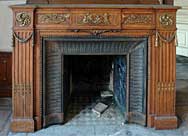Kindling Box
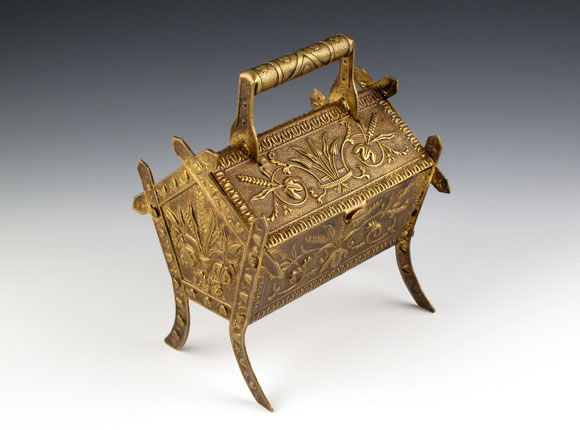
Needle Case
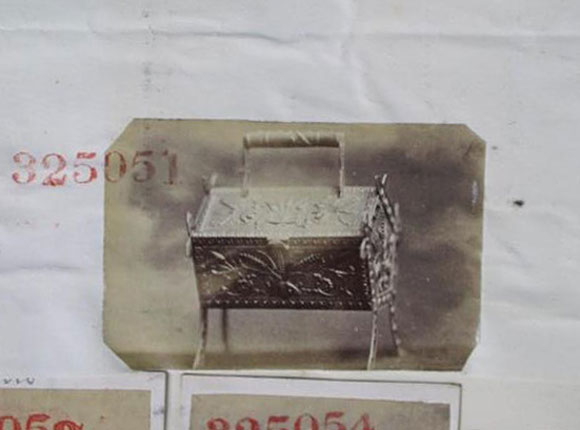
Design Representation
Design Details
Needle Case Type: |
Figural |
Patent/Registered to: |
W. Avery & Son - Redditch |
Patent/Design Representation #: |
Ornamental Class1: Metal: #325051 |
Patent/Design Registration Date: |
August 15, 1878 |
Location of Patent/Design Registration: |
The National Archives (TNA) - Kew, UK |
Reference #: |
TNA Representation - BT 43/44/325051
TNA Register - BT 44/4/325051 |
Dimensions: |
4.4 x 3.9 x 5.5 |
Material: |
Brass |
Name Variations: |
a) W. Avery & Son – Redditch
b) Cormack Bros - London |
Other Variations: |
None |
Additional Photographs
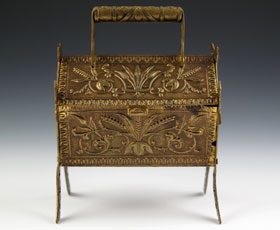
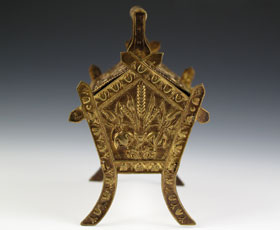
Front clasp and side views
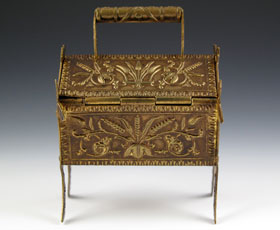
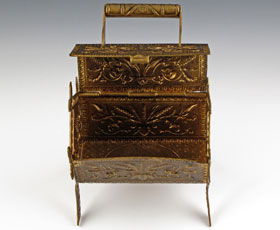
Back hinge and interior views
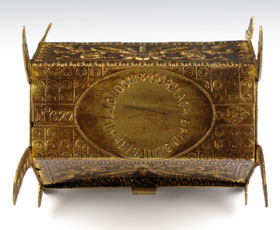
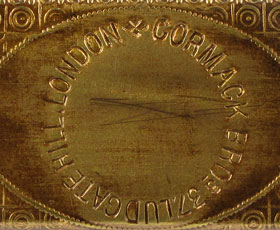
Bottom and Cormack signature detail
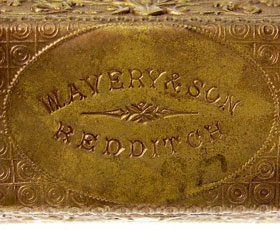
Avery signature detail
Facts
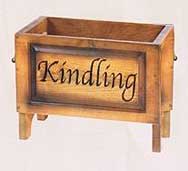
A kindling box is a chest or container used to store kindling, the material needed to start a fire. Kindling usually consists of straw,
twigs and small sticks or pieces of dry wood that are easily ignited. Before central heating was developed, most homes were heated by
fireplaces or stoves. During the Victorian period wood or coal was the fuel of choice, however it didn’t light easily and kindling was
necessary to get the fireplace going.
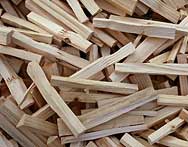
History
The ability to control fire was a major turning point in human evolution. Fire created heat making it possible to cook food, increasing
nutrition, as well as to keep warm in cold weather. Not only did the light generated from the fire allow tasks to be completed from dusk until
dawn, but it contributed to socialization around the campfire and also keep nocturnal predators at bay. As a result humans had more time to
concentrate on creating other inventions and could move to cooler climates where valuable resources were available. The earliest evidence of
the ability to control fire dates to one million years ago.
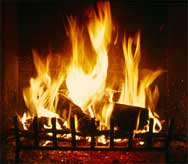
Miscellaneous
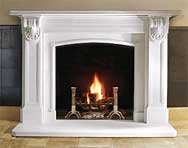
In the 19th century the fireplace in British homes was not only the source of heat but was also a vital part of the Victorian house, often
decorated to impress visitors. Mantelpieces made of wood, marble, slate and cast iron were elaborately decorated. In addition, because
of the difficultly in controlling the temperature, fire screens were used to regulate heat and to shield a person’s face when they were sitting to
close to the heat source. Usually these screens were made of elaborately decorated or painted wood with embroidery or needlework that was
completed by the lady of the house.
